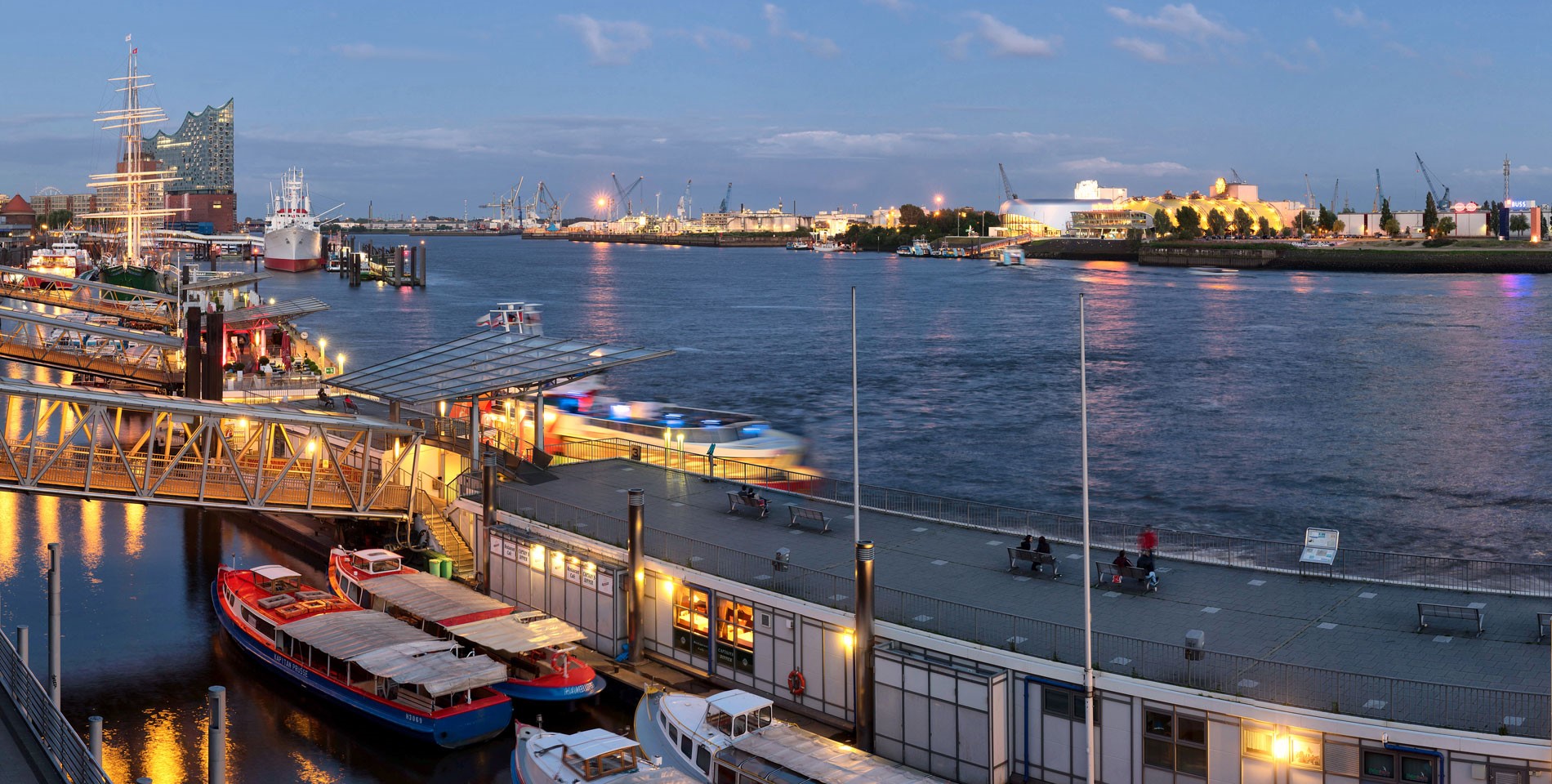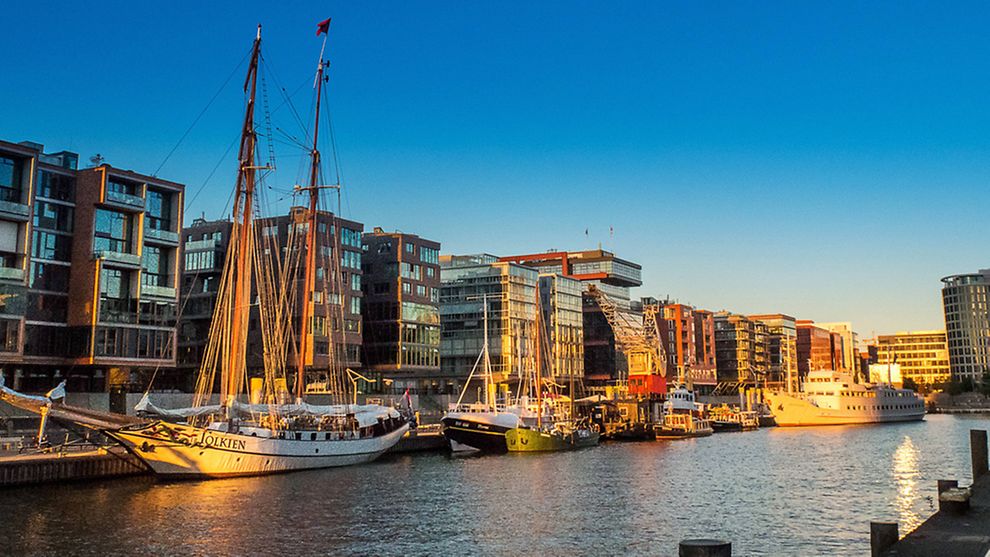When Sandtorhafen was founded in the 1860's, it was the first man-made harbour basin in Hamburg. It remained a busy trade hub for many years, until eventually the rise of cargo containers revolutionized transport entirely. After years of quiescence, the docks were reopened as a museum port in 2008.
Traditional ships since 2008
Fans of traditional seafaring have a plenty of options in Hamburg. Among them is Sandtorhafen port, where old-timey ships and boats have a permanent or temporary berthing place in the HafenCity district. With an ever-changing number of historic sailing ships and boats paying their visit to the harbour, Sandtorhafen functions as the complete opposite of the nearby Hamburg Cruise Center, where majestic high-tech cruise ships moor. The port itself is less old than the ships at anchor: founded in 2008, it belongs to the younger sights in the HafenCity district. From the promenade, the old ships can be seen, but entering the 380 metre-long pontoon grants a much better up-close view of the vessels. A total of 25 ships can be moored along the docks, which are flanked by three old cranes. In the interior of one of the old floating cranes, one of the quirkiest places in the world is housed. Harry’s Hafenbasar has been collecting exotic goods from all over the world and only the strangest and most unusual findings can be seen in the bowels of the crane.
In the middle of the pontoon, the harbour master’s office is located. Form the small cabin, volunteers run the port operations.
Modern port business in Hamburg
The man-made Sandtorhafen was opened in 1886. back then, cargo ships could still be moored alongside the docks, which look minute by modern standards. By means of steam-driven cranes, the cargo was loaded directly into the warehouses along the port or onto trains and horse carriages. This concept was new at the time and revolutionised turnaround of goods significantly. In only a few decades’ time, several similar basins were built on both sides of the Elbe river, where ships were no longer unloaded indirectly via small dinghies. The basins grew in size and modernity steadily, but it was Sandtorhafen that is still regarded as the prototype of this new era of maritime history in Hamburg.
Sandtorhafen as a museum port
Throughout time, modern technology allowed for ships to become increasingly large, gradually leaving Sandtorhafen too small to handle the bigger freighters. In the 1980's there was no stopping this development and Sandtorhafen along with other basins in the Hamburg port were abandoned. Finally, after years of being an industrial wasteland, Sandtorhafen became part of the ambitious construction plans in the HafenCity district.
HafenCity sights
Despite the area’s still being under construction, there’s no shortness of sights in HafenCity district. Next to its landmark, the Elbphilharmonie concert hall, architectural masterpieces such as the Unilever-Haus and the Marco-Polo-Tower catch the eye in this utopian landscape. The Speicherstadt UNESCO World Heritage Site is also located just a stone’s throw away.
Getting there:
U3 trains to Baumwall
Address:
Am Sandtorkai
20457 Hamburg
For an exhaustive real-time overview of ships in the Hamburg port area, see the Ship Radar.
See also the pages of Hamburg Travel, for further in-depth information on the topic.

